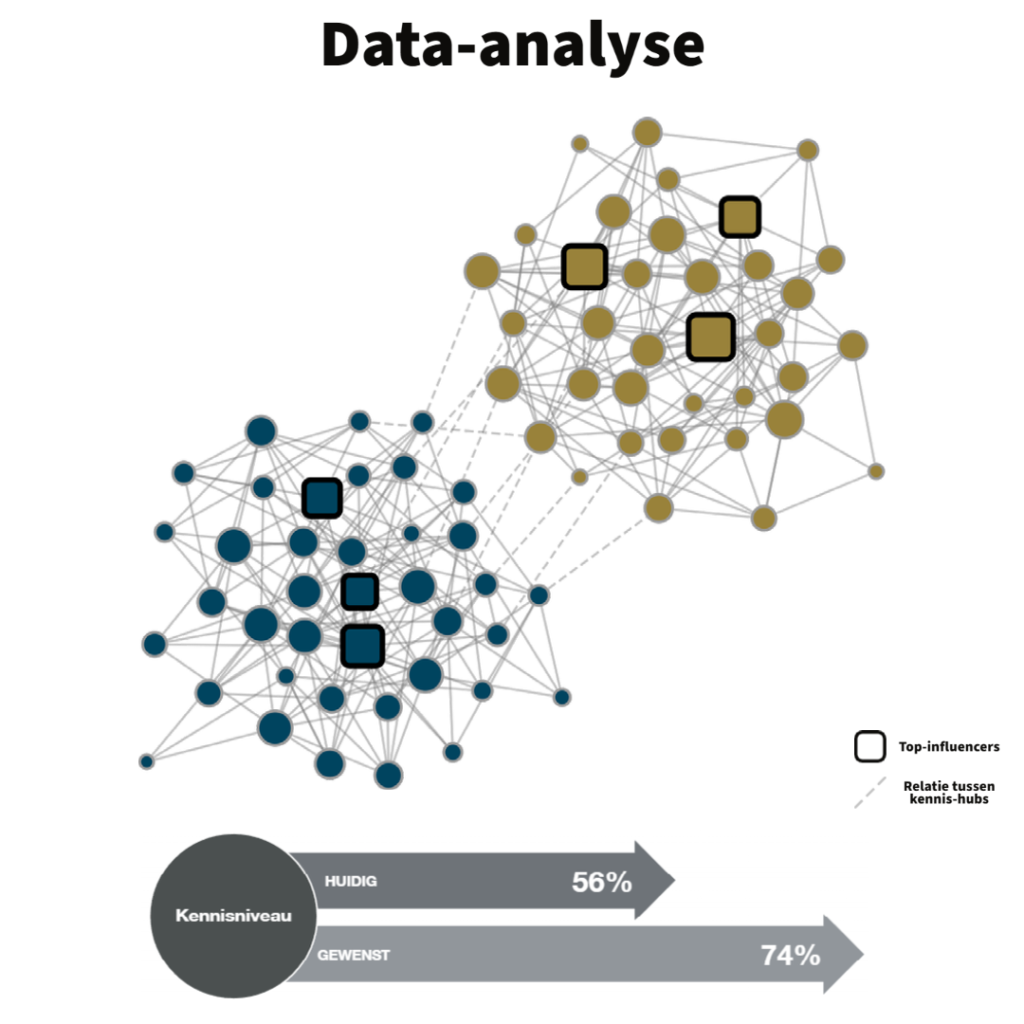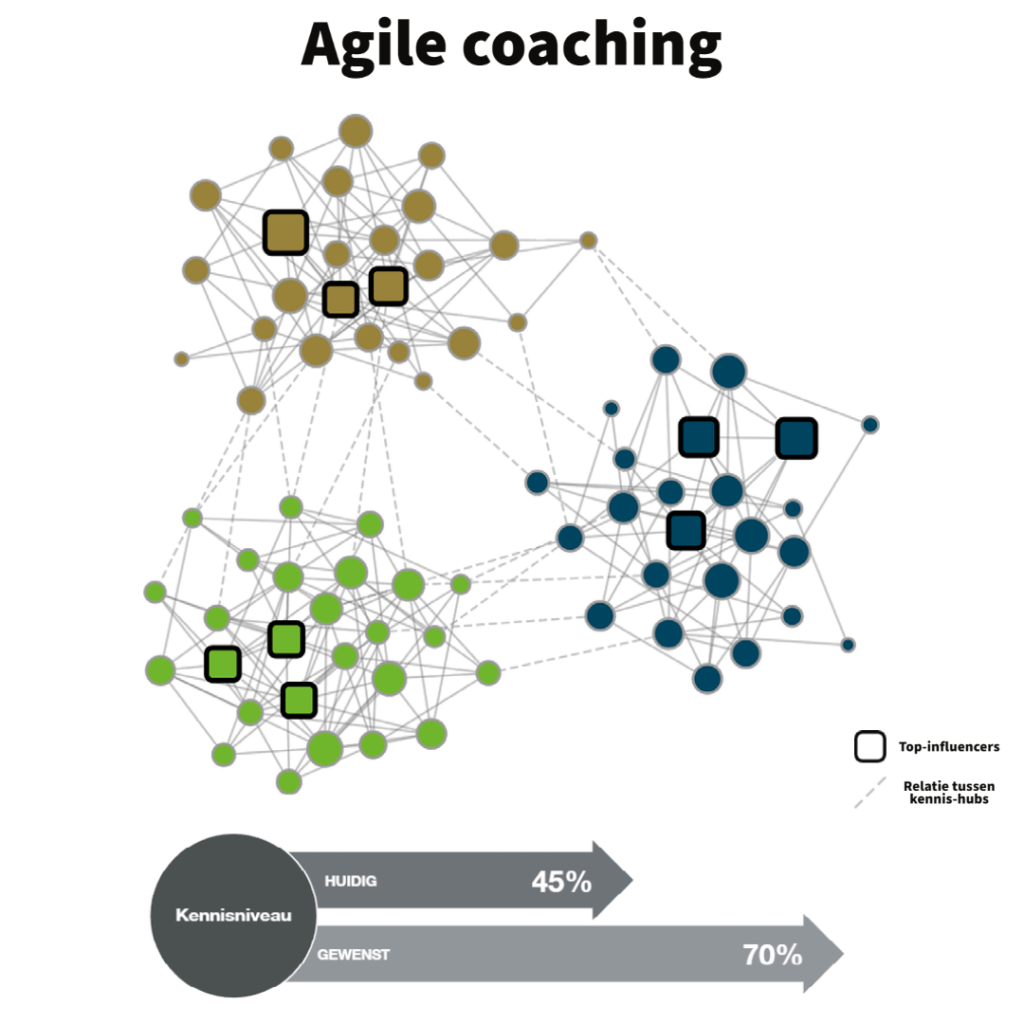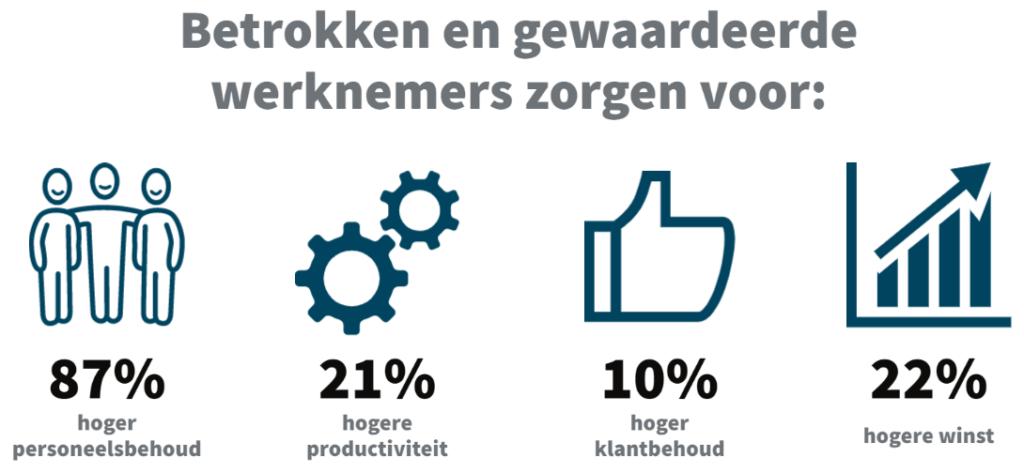Knowledge is vital to the modern organization. Therefore, it makes sense for companies to allocate high budgets for external education so that they can remain agile in the marketplace. But who are actually the ones currently ensuring success and innovation within the company? These are the current employees.
Organizational Network Analysis (ONA) enables the formulation of clear and measurable policies for effective knowledge sharing within an organization. A focused ONA is thereby designed so that the policy always aligns with a company’s strategic knowledge goals and current challenges. This reduces the need to spend on external education while enhancing employee knowledge, connection and engagement.
Discover hidden potential with ONA
Using ONA, an organization gains insight into how knowledge is shared about the most strategically important skills. The so-called knowledge network within a collaboration provides concrete tools for streamlining the exchange of knowledge. This allows knowledge exchange and collaboration to be used structurally to expand the level of knowledge within an organization, using its own employees.
ONA clarifies for both large and smaller organizations:
- What knowledge hubs exist within a company. These are groups of people who exchange more knowledge with each other on a topic than with people in another group. If these groups are strictly separated, then there are knowledge silos and no knowledge exchange takes place between the groups. By increasing knowledge exchange between knowledge hubs, specific business-relevant knowledge can be disseminated that would otherwise have gone untapped.
- Who the top influencers are in these knowledge hubs. These are high-level talents in an important skill that people often naturally want to learn from. These are ideally people who possess the knowledge relevant to the company and should be involved in shaping internal knowledge sharing.
- Who are the connectors between the knowledge hubs. These relationships are particularly effective for bringing knowledge hubs together.
- What the current level of knowledge is in a company’s strategically important skills and where the employees’ ambitions lie in this.
The figures below show these insights for two strategically important skills, data analytics and agile coaching, from a boutique consulting firm. In it we see, for example, that:
- Knowledge hubs exist, even within a company of 100 people. Two knowledge hubs for data analysis and three for agile coaching. There are no strict knowledge silos, but connections between knowledge hubs are scarce.
- Who has the greatest influence within a knowledge hub.
- That relationships between the knowledge hubs already exist that can be used to bring them together.
- Employees want to increase their current skills by about 20%.


Realize untapped potential with internal policies
With ONA as a foundation, active policies can be formulated that match the reality within the organization. A good ONA connects directly to a company’s strategic goals, using the best consultants available to achieve the results, namely its own employees who work there every day.
By formulating policies that meet the needs of employees and actively involve informal leaders and connectors, new policies are widely supported. Policy then becomes not something that has to be done, but something that ensures that the organization comes together to work energetically and focused on the goals of the company. Because everything is quantified, the effectiveness of policies can be monitored using ONA.
At the consulting firm in the example, the choice was made to hold monthly webinars, with an afternoon blocked off for presentations on innovative methods within each knowledge hub. The turnout and enthusiasm was overwhelming; an average of about 70 people attended the webinar. Within 6 months, the knowledge level had increased by 15%, using internal knowledge. Also, the organization is better connected.
Engaged and valued teams make your organization successful
Actively including an organizations’ employees in policy formulation ensures a higher level of commitment. By giving people a voice in fulfilling their ambitions within the educational needs of the organization, they become co-owners of the outcome. Top talents and connectors are thereby valued for their qualities and given the opportunity to use them for the organization.

Because top internal talents are used for knowledge sharing, the knowledge being shared aligns with the work of the organization. It also increases connectivity through knowledge sharing, creating fertile ground for improved collaboration and communication. This leads to better productivity, according to 86% of employees and managers.
ONA enables this to be accomplished using already available resources and talents within the organization. Wondering how ONA can make your organization more knowledge-driven? Make a no-obligation appointment or email us at info@qultify.com.













